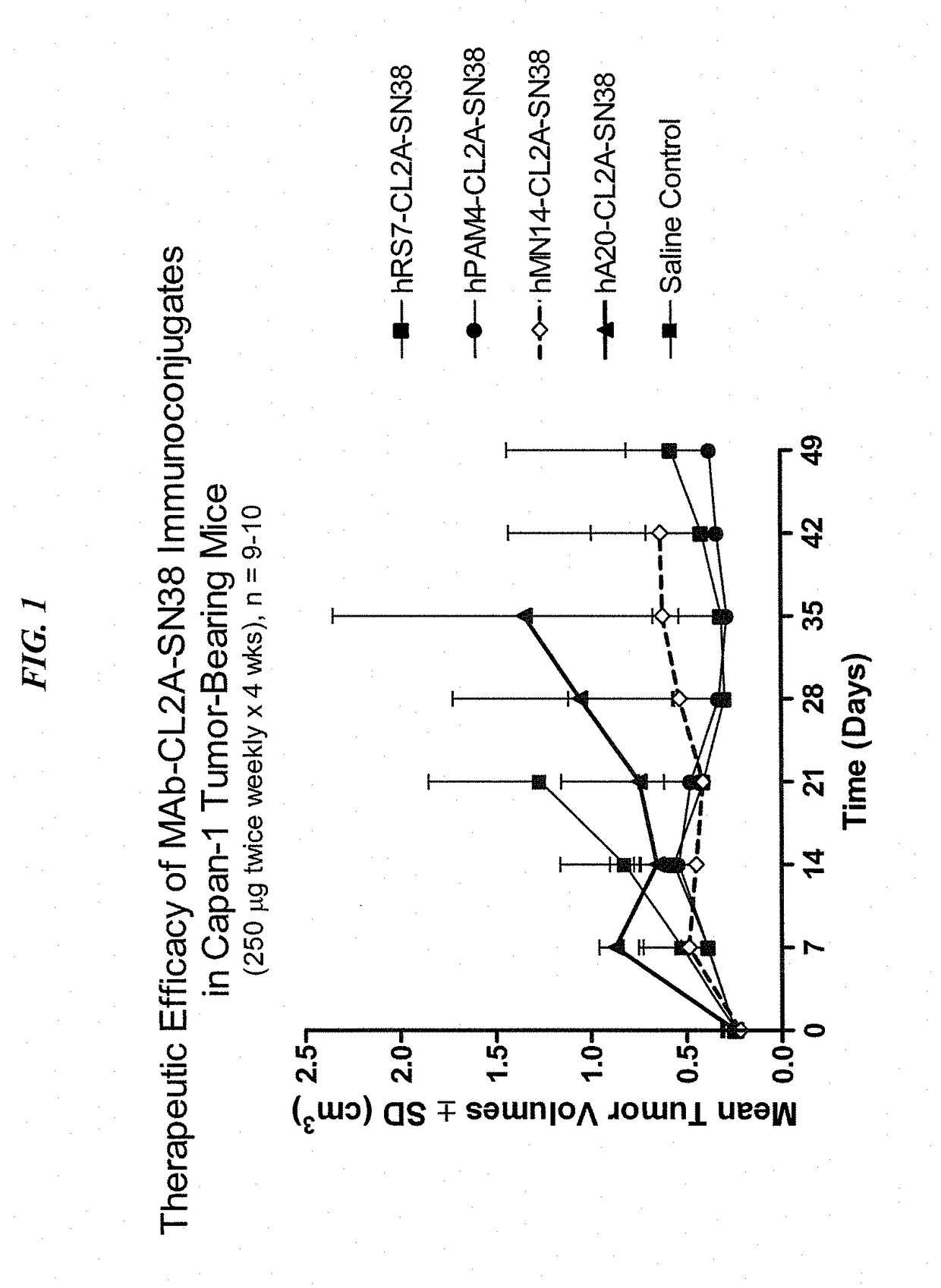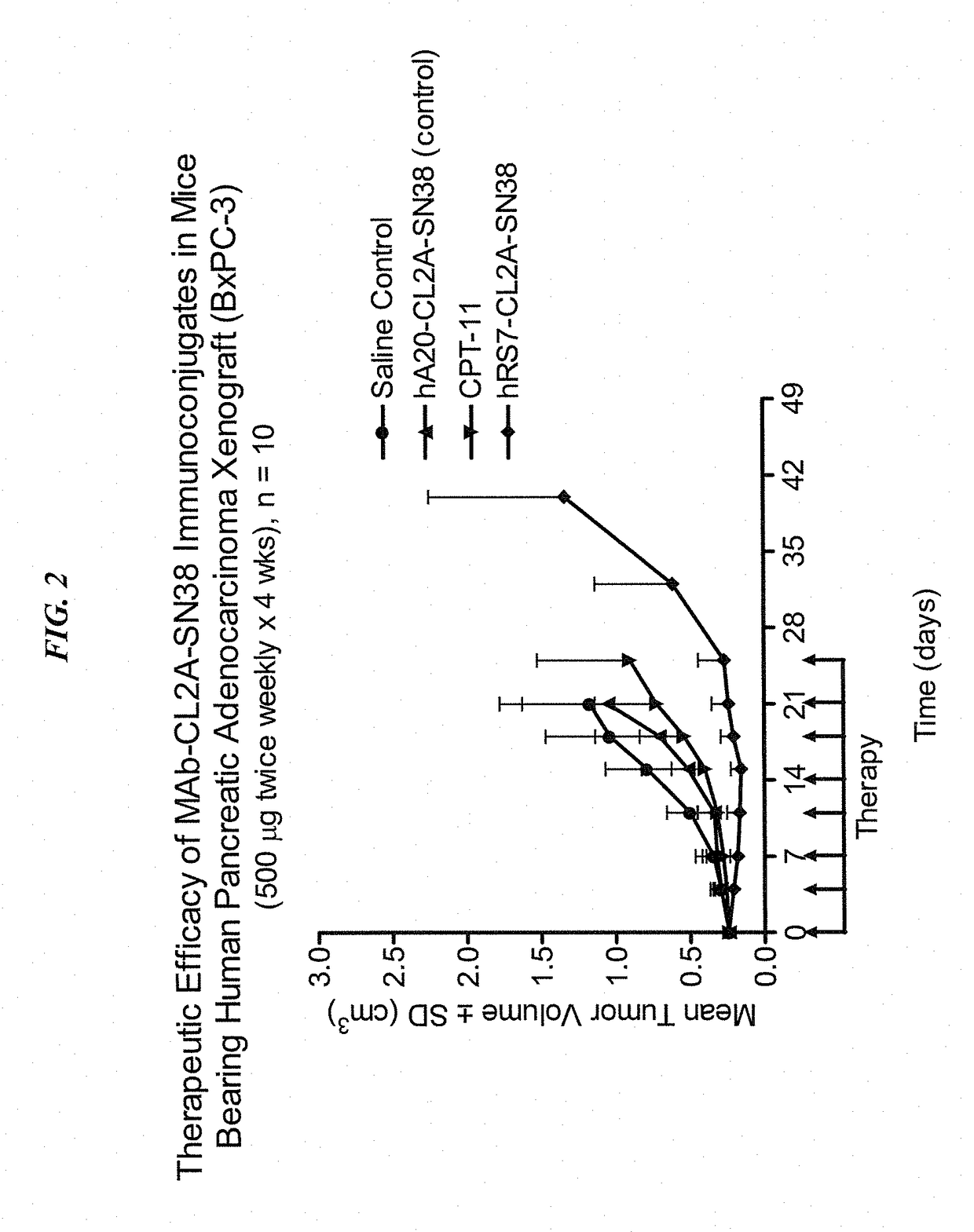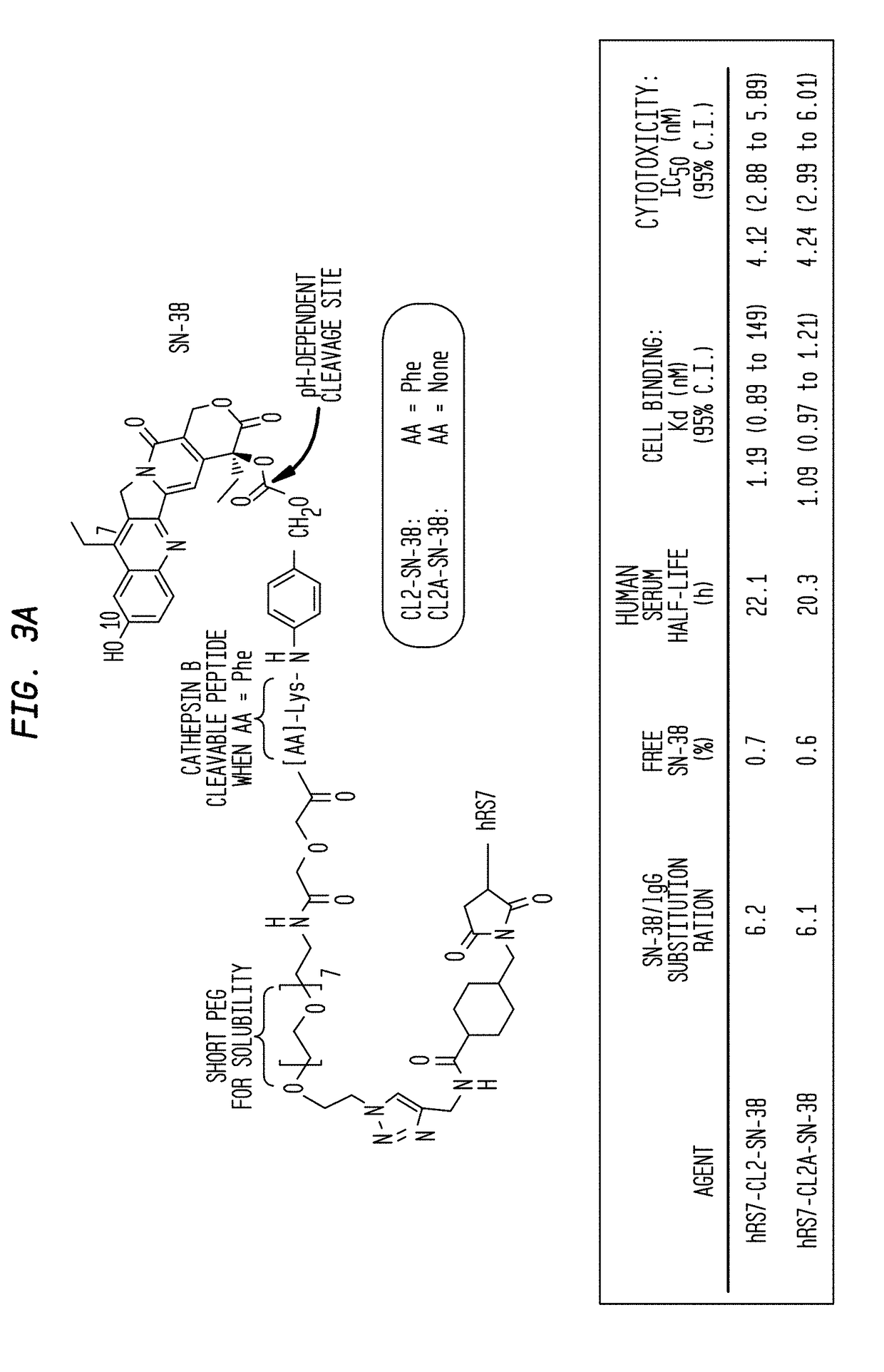Subcutaneous administration of antibody-drug conjugates for cancer therapy
a cancer therapy and antibody technology, applied in the field of subcutaneous administration of antibody-drug conjugates, can solve the problems of low absorption rate of monoclonal antibodies and the need to maintain low injection volume, and achieve the effects of reducing toxicity, increasing or decreasing doses, and improving absorption ra
- Summary
- Abstract
- Description
- Claims
- Application Information
AI Technical Summary
Benefits of technology
Problems solved by technology
Method used
Image
Examples
example 1
Therapy of GI Cancers with IMMU-132 (Sacituzumab Govitecan), an Anti-Trop-2-SN-38 Antibody Drug Conjugate (ADC)
[0199]Trop-2 is a tumor-associated glycoprotein highly prevalent in many epithelial cancers. Its elevated expression has been linked to more aggressive disease and a poor prognosis. A humanized mAb binding to the extracellular domain of Trop-2 was conjugated to SN-38 (IMMU-132; average drug:mAb ratio=7.6), the active principle of CPT-11. After potent activity in human tumor xenografts, a Phase I / II trial was initiated in patients (pts) with diverse solid tumors, including GI cancers.
[0200]Methods:
[0201]Patients with metastatic cancers were enrolled after failing standard therapy, starting at a dose of 8.0 mg / kg given on days 1 and 8 of a 3-week cycle. The MTD was determined to be 12 mg / kg; dose levels of 8 and 10 mg / kg were chosen for Phase II testing.
[0202]Results:
[0203]Sixty patients with advanced GI cancers were enrolled in a Phase I / II trial. In 29 CRC patients (9 treat...
example 2
AM5-SN-38 Antibody Drug Conjugate (IMMU-130) Activity in Metastatic Colorectal Cancer (mCRC)
[0206]IMMU-130 is a CEACAM5-targeted ADC, labetuzumab-SN-38, with the drug being the active form of the topoisomerase I inhibitor, CPT-11, and substituted at 7-8 moles / mole of IgG. This agent is in Phase I / II clinical trials in patients with relapsed mCRC.
[0207]Methods:
[0208]Experiments were conducted in female athymic nude mice, 4 weeks or older, bearing s.c. LS174T human colon carcinoma xenografts of (˜0.2 cm3 size), or 2 weeks after lung metastases were generated by i.v. injection of GW-39 human colon carcinoma cells. Untreated controls, including a non-targeting ADC, were included. Biodistribution was examined in the s.c model using single 12.5 mg / kg dose of the ADC or unconjugated labetuzumab, each spiked with 111In-labeled substrate. Tolerability studies were conducted in white New Zealand rabbits.
[0209]Results:
[0210]In the metastatic model (n=8), fractionated dosing of 2 cycles of a 21...
example 3
n and Use of Anti-Trop-2-SN-38 Antibody-Drug Conjugate
[0213]The humanized RS7 (hRS7) anti-Trop-2 antibody was produced as described in U.S. Pat. No. 7,238,785, the Figures and Examples section of which are incorporated herein by reference. SN-38 attached to a CL2A linker was produced and conjugated to hRS7 (anti-Trop-2), hPAM4 (anti-MUC5ac), hA20 (anti-CD20) or hMN-14 (anti-CEACAM5) antibodies according to U.S. Pat. No. 7,999,083 (Example 10 and 12 of which are incorporated herein by reference). The conjugation protocol resulted in a ratio of about 6 SN-38 molecules attached per antibody molecule.
[0214]Immune-compromised athymic nude mice (female), bearing subcutaneous human pancreatic or colon tumor xenografts were treated with either specific CL2A-SN-38 conjugate or control conjugate or were left untreated. The therapeutic efficacies of the specific conjugates were observed. FIG. 1 shows a Capan 1 pancreatic tumor model, wherein specific CL2A-SN-38 conjugates of hRS7 (anti-Trop-2)...
PUM
| Property | Measurement | Unit |
|---|---|---|
| Fraction | aaaaa | aaaaa |
| Fraction | aaaaa | aaaaa |
| Fraction | aaaaa | aaaaa |
Abstract
Description
Claims
Application Information
 Login to View More
Login to View More - R&D
- Intellectual Property
- Life Sciences
- Materials
- Tech Scout
- Unparalleled Data Quality
- Higher Quality Content
- 60% Fewer Hallucinations
Browse by: Latest US Patents, China's latest patents, Technical Efficacy Thesaurus, Application Domain, Technology Topic, Popular Technical Reports.
© 2025 PatSnap. All rights reserved.Legal|Privacy policy|Modern Slavery Act Transparency Statement|Sitemap|About US| Contact US: help@patsnap.com



